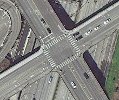From the American Heart Association, National Walking Day is coming up. On Wednesday, April 4, participate in a local noontime walk starting downtown at 1200 5th Avenue. More information below and at PugetSoundHeartWalk.org:
SEATTLE – The American Heart Association (AHA) has designated Wednesday, April 4, 2012 as National Walking Day in an effort to encourage more Americans to adopt active lifestyles and lower their risk for heart disease, the leading killer in the United States.
Walking has the lowest dropout rate for any physical activity, and walking for as little as 30 minutes a day can improve circulation, lower cholesterol and blood pressure, and promote weight loss, according to the AHA.
“We are proud to collaborate with the American Heart Association for National Walking Day,” says Ron Heller, Pacific Northwest Regional Executive for Union Bank, the sponsor for National Walking Day. “At Union Bank, we are committed to responsible banking and supporting total wellness in the communities we serve. On April 4, we are calling on Puget Sound companies to get involved by encouraging their employees to bring their sneakers to work and take a walking break during the day.”
Community Walks
The AHA and Union Bank will host a one-mile group walk in Downtown Seattle from the Union Bank branch at 5th and University Streets, noon – 1:00 p.m. Companies and individual walkers are invited to participate.The Union Bank Everett Main branch, 332 SW Everett Mall Way, will also host a walk at noon for employees, area companies, and the public.
Seattle Parks and Recreation will host community walks at various locations as part of National Walking Day. For a list of locations and times, visit PugetSoundHeartWalk.org.
The City of Bothell is organizing a walk at noon for employees, area companies, and the public. The walk will begin at the police station parking lot, 18410 101st Ave. NE, and walkers will be provided water and snacks at the finish.
Organize Your Own Walk
Anyone can be part of National Walking Day by lacing up their sneakers and going for a walk. Companies and organizations that wish to promote fitness and organize group walks can find free resources at PugetSoundHeartWalk.org. Organizations with the highest participation in the small and large categories will receive the AHA’s Golden Tennis Shoe Award.All individuals that walk 30 minutes will be entered to win Brooks shoes and a month’s supply of snacks from Popchips. Group walk coordinators must email information to king.walk@heart.org or individuals can enter from April 4 – 12 at PugetSoundHeartWalk.org.
Put Some heART in Your Step: Shoe Decorating Contest
Tap into your creativity and style up your shoe in honor of National Walking Day. Decorate a pair of tennis shoes any way you like, then take a photo and e-mail to king.walk@heart.org. Photos will be accepted from Saturday, March 24 through Saturday, April 7 and posted on the AHA’s Facebook page, Facebook.com/AHAPugetSound. Winners of the Put Some heART in Your Step shoe decorating contest will be selected on April 13 and will receive a new pair of Brooks shoes.National Walking Day is part of the American Heart Association’s My Heart. My Life. healthy living initiative to help Americans achieve ideal cardiovascular health. To learn more, visit PugetSoundHeartWalk.org or call the local AHA at (206) 632-6881.













